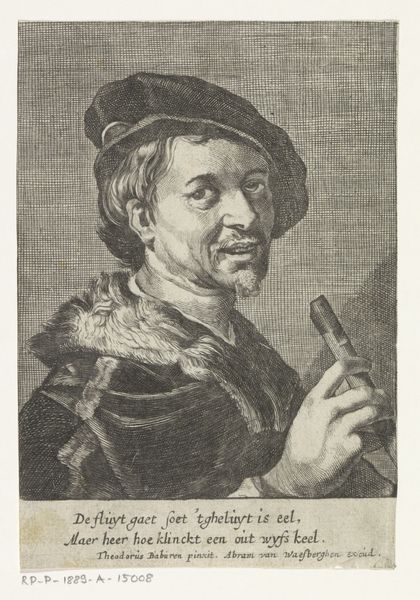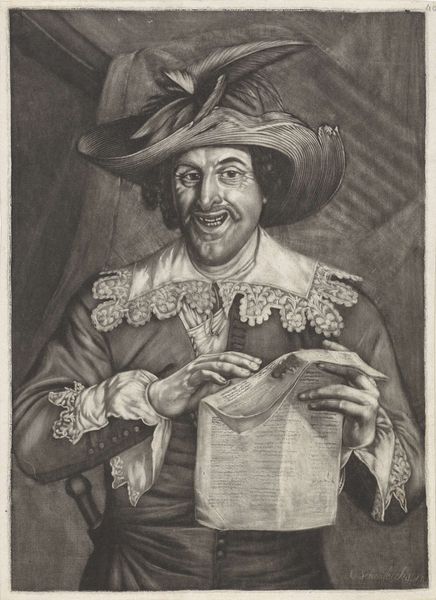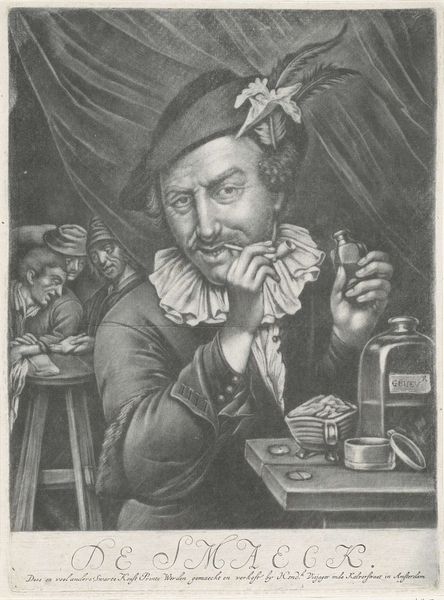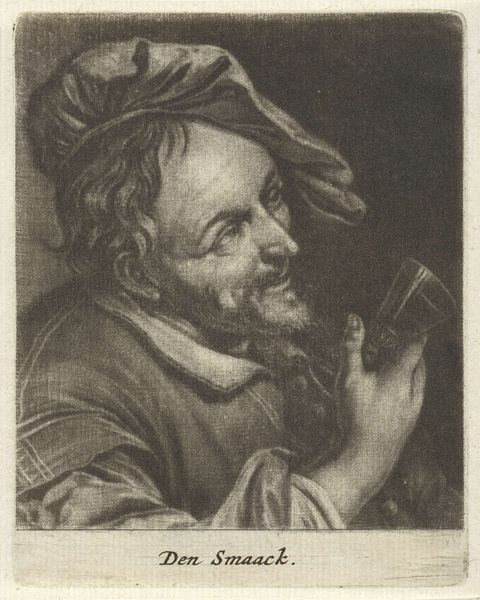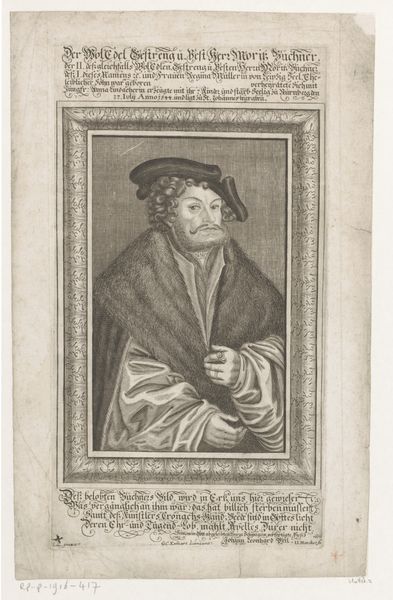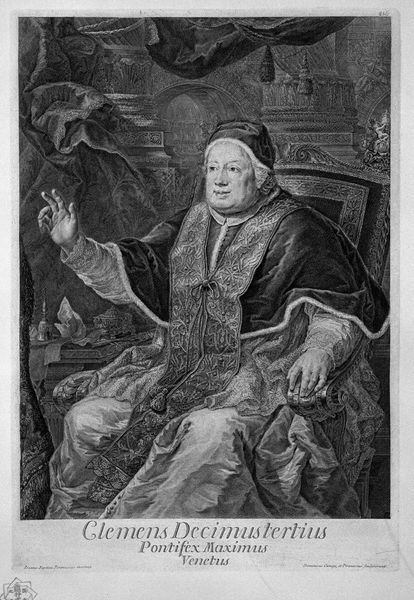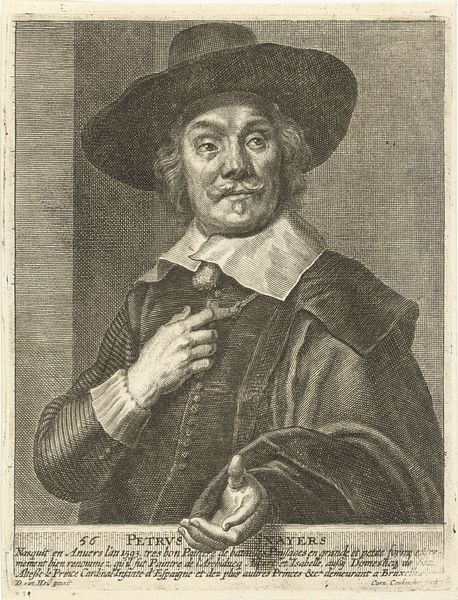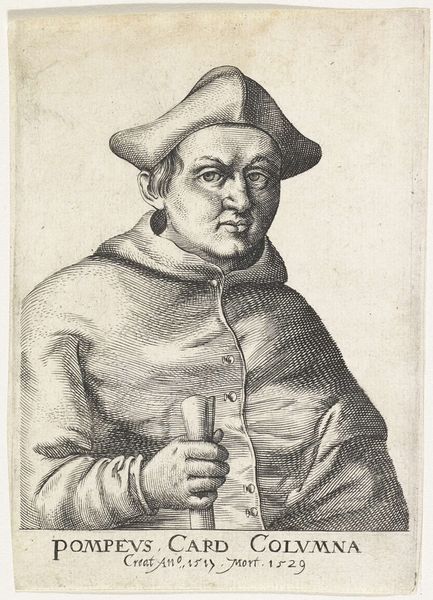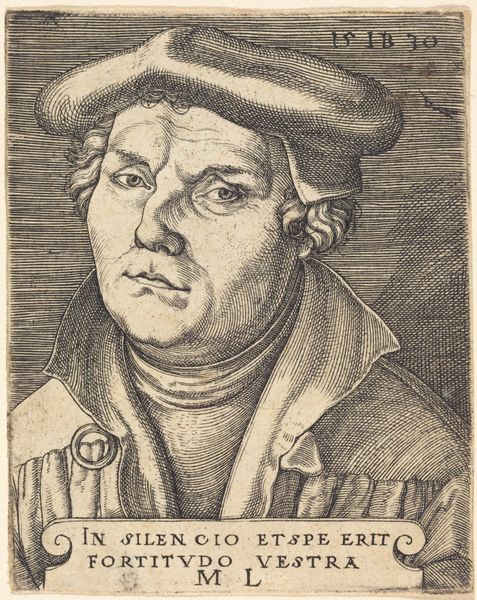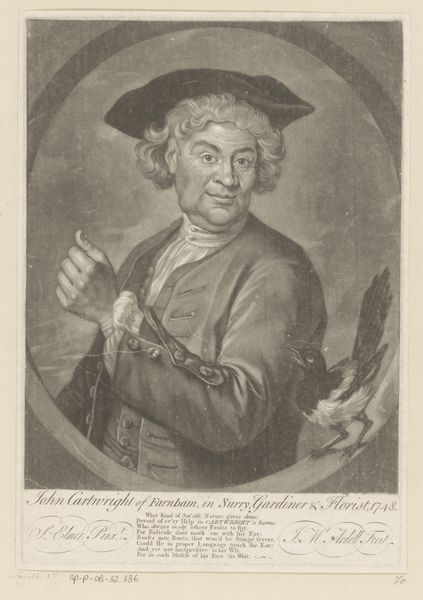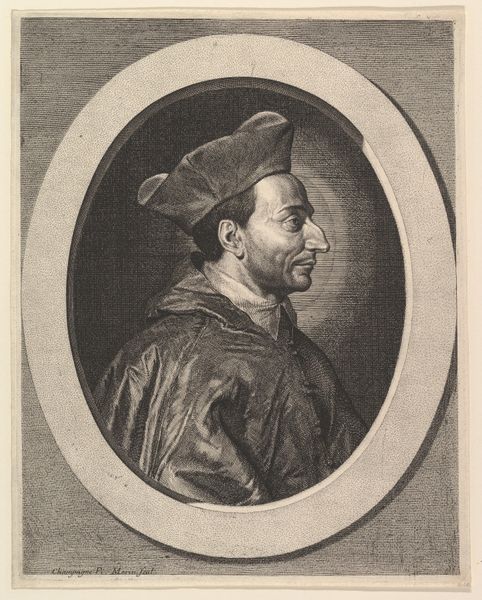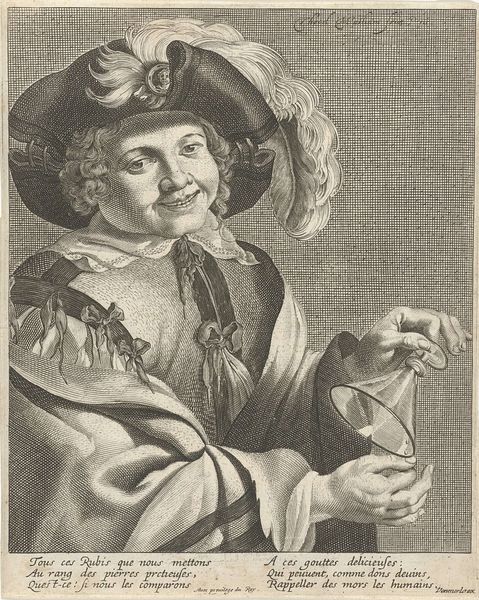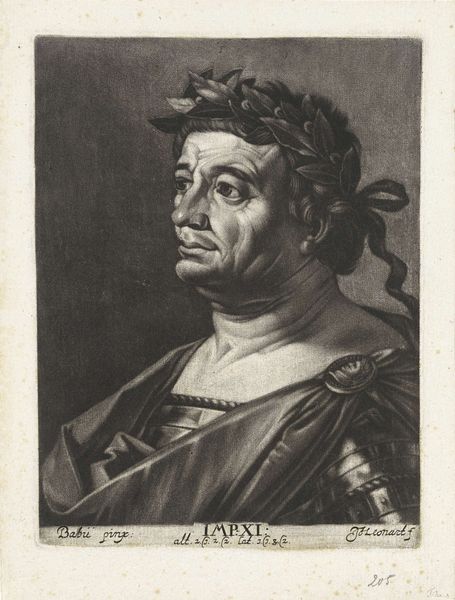
drawing, print, engraving
#
portrait
#
drawing
#
baroque
# print
#
portrait drawing
#
engraving
Dimensions: image: 5 1/2 x 4 5/16 in. (14 x 10.9 cm) sheet: 6 3/8 x 4 7/16 in. (16.2 x 11.3 cm)
Copyright: Public Domain
Curator: Looking at this piece, which is located here at the Metropolitan Museum of Art in New York, we find "The Man with the Flute," created around 1625 by Cornelis Bloemaert. Editor: The expression is really striking; almost mischievous. And the intense detail in the fur collar, particularly considering the entire artwork is monochromatic. It feels almost like a captured moment, intimate and maybe a bit provocative. Curator: I would agree, although there is an inscription under the portrait attributed to Theodorus Baburen, and from my viewpoint the textual elements add significant depth; what’s visually accessible on the surface transforms in light of an appreciation for period aesthetics and contextual mores. This engraving transcends being a mere visual portrait of a flute player to enter the sphere of representing the identity of this time, and even Baroque theatricality. Editor: Yes, absolutely! There’s definitely that theatrical flair, a staging almost. And the composition reinforces that, doesn't it? Notice the contrast between the tightly controlled hatching in the face and the looser strokes suggesting texture in the garment, a dialogue between restraint and expressiveness. It guides our eye right where the artist wants it. It almost suggests he has some inner knowledge of performance. Curator: It serves as a looking glass, but into the soul, one filled with cultural narratives of gendered performances that may have escaped its subject. It is tempting to position the work at the junction of self-actualisation, expression and imposed ideals around societal expectation. In other words, we may be tempted to overinterpret meaning to images due to contemporary social and political norms and thus read images into works from the past. But it doesn’t always work. Editor: Right, and sometimes imposing our modern lenses obscures the original intent and aesthetics. Maybe the power resides in simply appreciating how line and form evoke this feeling, almost irrespective of "meaning," allowing each viewer their personal reading and appreciation of the object through its composition. Curator: Perhaps by situating it between formal elements and an appreciation of the social context of artwork, one may attempt to see that which otherwise remains in the dark. Editor: Well said. I suppose that's what keeps bringing me back to these old forms, those hidden layers of meaning or simple beauty.
Comments
No comments
Be the first to comment and join the conversation on the ultimate creative platform.
